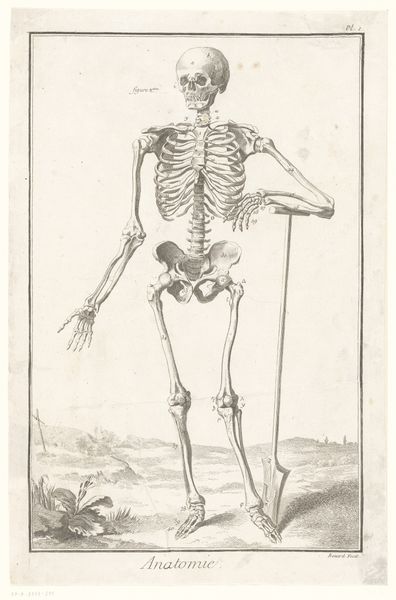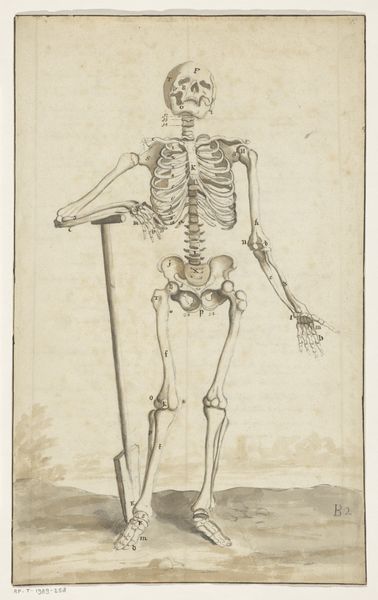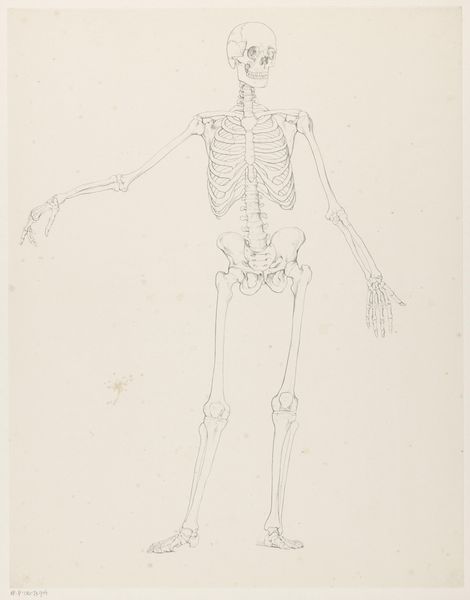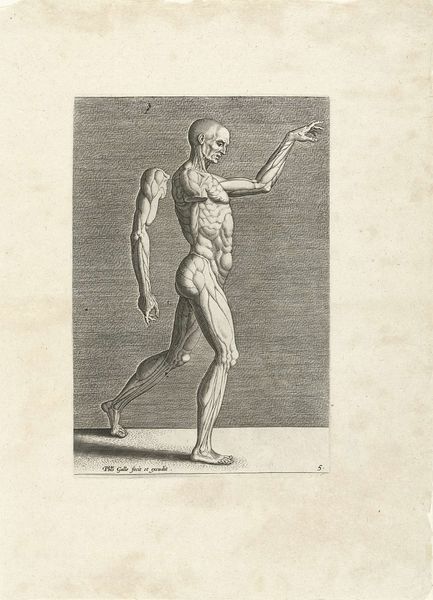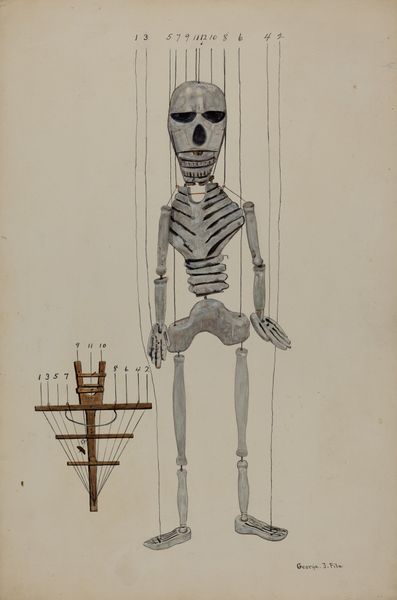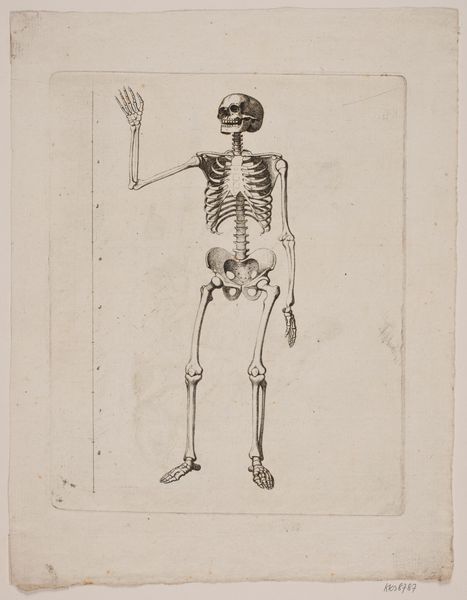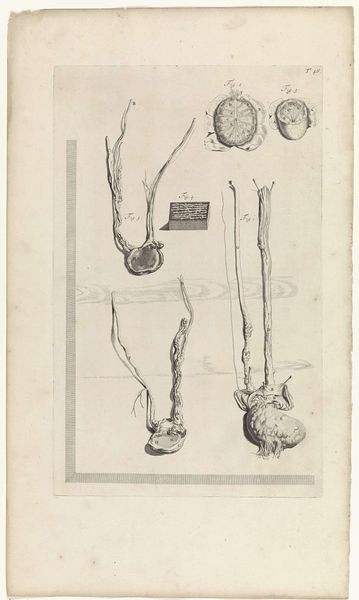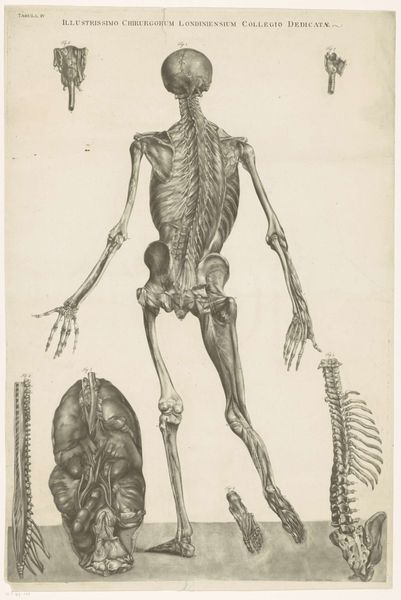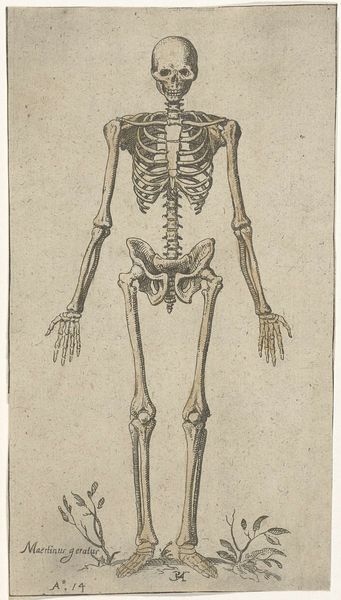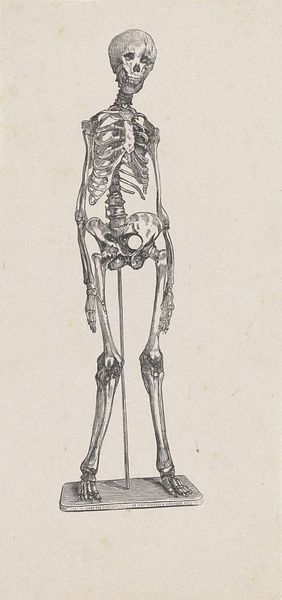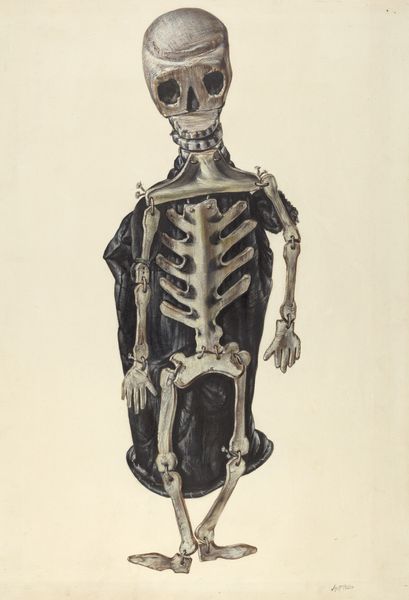
drawing, print, etching, paper
#
portrait
#
drawing
#
neoclacissism
# print
#
etching
#
paper
#
academic-art
Dimensions: 315 × 205 mm (image); 355 × 228 mm (plate); 400 × 260 mm (sheet)
Copyright: Public Domain
Curator: This image, “Design: Mannequin, from Encyclopédie,” created sometime between 1762 and 1777, intrigues me. It’s a print, primarily etching on paper, made by Benoit Louis Prevost and is now held at the Art Institute of Chicago. Editor: Well, my first impression is that it’s a strange kind of beauty—austere but elegant. Like an anatomical drawing crossed with a surreal robot. The stark lines and pale tonality give it a cold, almost clinical feel. Curator: Indeed. It's from the Age of Enlightenment. The Encyclopédie itself was a monumental effort, aiming to categorize and disseminate knowledge, reflecting the era's faith in reason and empirical observation. And this mannequin? A tool. Editor: Exactly, but what fascinates me is the *process* of knowledge production, here so openly revealed. The artist’s labor, the etcher's craft… it brings to mind the societal implications of mechanization and labor specialization, very present at this time. The clean lines almost mimic the rationalization of labor itself. Curator: It speaks to the period's intense focus on systematizing artistic production, where academic art sought to codify the ideal human form, in order to standardize it. This print offered a guide, a template for aspiring artists striving for excellence. It is the embodiment of neoclassical ideals and order. Editor: But also, notice how this diagram disrupts our traditional expectations of high art? Is it "art" or technical instruction? The print format also indicates a broader reach, democratizing access to artistic knowledge... which in turn, commodifies skill, transforming artistic labor within the market. Curator: An insightful observation. Prints like this served a vital function in circulating visual ideas, shaping taste, and ultimately contributing to the evolving artistic marketplace and its complex power structures. And of course, the Encyclopédie itself relied on patronage and subscriptions, tying its very existence to specific economic and political realities. Editor: Absolutely. Viewing the work through the lens of its creation and use transforms our appreciation of its function in the visual landscape. Thanks to examining the material process and societal context, our understanding has definitely deepened. Curator: I concur. The chance to discuss its historical implications in light of the means of production has opened up richer ways to view it.
Comments
No comments
Be the first to comment and join the conversation on the ultimate creative platform.
